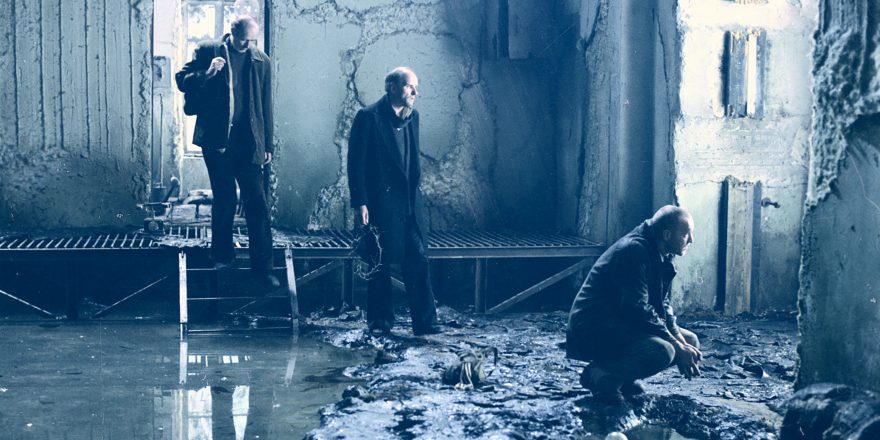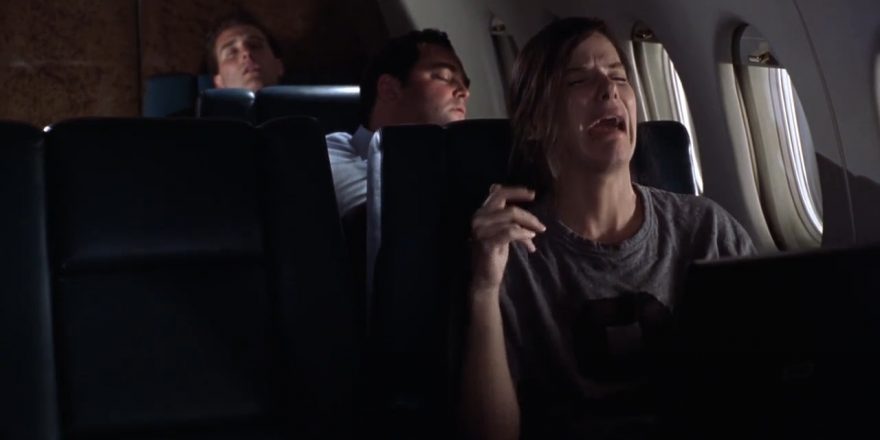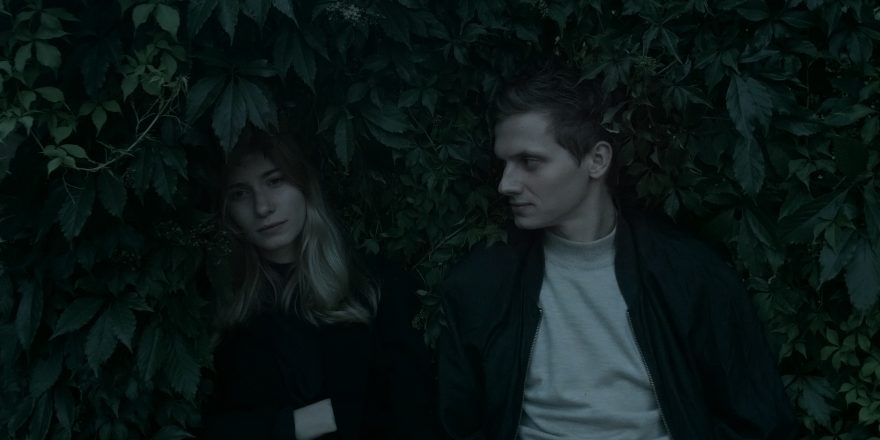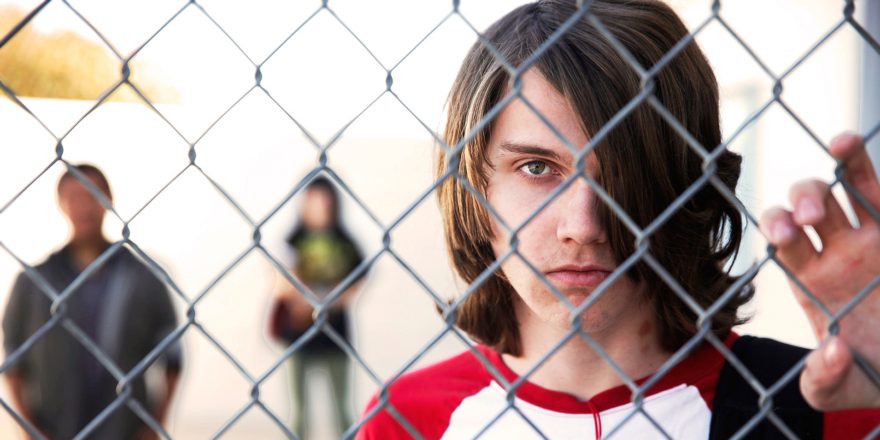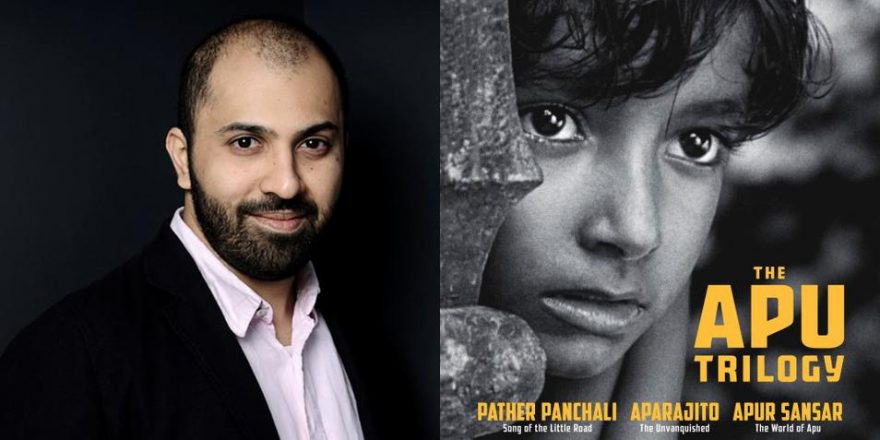Earlier this year, I went to see a re-release of Tarkovsky’s Stalker. I hadn’t seen it projected since film school, almost 25 years ago, and on that occasion I slept through most of it. Despite having seen it on video over the years, always in segments, an hour at a time, I was excited to see the whole thing projected in one uninterrupted sitting. Alas, it never happened. Somewhere in the middle (and with Stalker, who can even tell where?), I fell asleep. I was only out for about 10 minutes, but I missed the one sequence I had most been looking forward to.
After the screening, I was crestfallen: all these years waiting to see the film projected again, and I couldn’t stay awake. At the time, I chalked it up to jet lag (I had just returned from a long trip abroad) and to the fact that Stalker seems to put everyone to sleep. On the way out of the theater, all around me, I overheard moviegoers whispering to each other that they had nodded off as well. It wasn’t just me.
But then, the same thing happened a few weeks later when I went to see a release of the restored Pather Panchali. Somewhere in the first half hour I dozed off, probably for only about 10 minutes, but early enough in the movie to strike me as odd. I wasn’t tired coming in to the film, and I wasn’t jet-lagged, yet still I nodded off. Afterwards, the friend who had accompanied me (and for whom the Apu Trilogy is a favorite) confessed that he too had briefly fallen asleep –– and during the exact same stretch of the movie.
I was immediately reminded of my years as a college undergraduate in film history and analysis classes, during which I suffered from an affliction I now affectionately refer to as cinematic narcolepsy. Back then, I was watching four or five different films a week for my classes, and almost without fail, at around 15-20 minutes into each one I would nod off for about 5-10 minutes. No matter the time of day, my state of caffeination, or my enthusiasm for the film, it was inevitable: my eyes would start to grow heavy and, despite every effort to stay with the film, it would all become a blur of flickering images, the dialogue and story reduced to senseless mush.
For a film major, my condition was a source of great shame. How was it that I, an aspiring filmmaker, who professed to love cinema, could fall asleep during just about every film I watched?
I wanted to ask my professors if the flicker of projected cinema had a known hypnotic effect. This was back in the 1980s and ’90s, when we watched actual film prints, and I knew that the mechanics of projection ensured that, technically, one spent 50 percent of any screening in total darkness. But to ask the question was to admit what seemed to me a crime. My movie narcolepsy and my professed ambition struck me as shamefully contradictory. So I just kept quiet about it and did my best to hide it.

Years later, as a filmmaker with a few films to my name, I met Michael Silverblatt (the host of NPR’s Bookworm) at a party and somehow managed to get into a conversation with him about my cinematic narcolepsy. It hadn’t been a problem anymore for some years now. Was it that I was no longer an overly fatigued twentysomething? Or that I had long since stopped watching films in the context of being a student? Michael dismissed my hypotheses and confidently put forward his own theory: “Of course you fell asleep! Cinema, at its best, invites the viewer into a dream state. So if you found yourself getting drowsy in a film, it was most likely because the film was communicating to you in the language of dreams, lulling you into a state closer to the unconscious mind than the waking mind.”
At the time, I found this explanation intriguing but suspected it as a clever intellectual rationalization. Admittedly, there is a certain comfort –– even pleasure –– in falling asleep during a movie, especially a familiar one. I’m reminded of holidays at my grandparents’ house, siblings, cousins, aunts, and uncles sprawled in front of the television in a post-dinner drowse, slipping back and forth between a nap and The Wizard of Oz or The Sound of Music. But one hardly considers this a goal of the art form. (Imagine the studio pitch meeting in which a director enthuses: “I really want this to be a film that the whole family can fall asleep to! It’ll be so amazing!”)
However, I do find it intriguing that I don’t fall asleep during bad movies. I’m wide awake during bad movies. I’m alert and studying them with a critical eye. All the movies I fell asleep in as a student? They’re the ones that cineastes prize: Charlie Chaplin and Orson Welles, Hitchcock and Herzog … Ford, Lang, Truffaut, Mizoguchi, Kubrick, Scorsese. You name a film in the cinema canon, I fell asleep in it. Citizen Kane? I fell asleep. Eraserhead? Fell asleep. Apocalypse Now? Asleep. The Birth of a Nation? Out cold, and that was even while sitting next to the piano at which my super-cool professor was playing a live accompaniment!
Looking back, I remember falling asleep on four separate attempts to get through Fellini’s 8½, and that was my favorite film (it still is). All the while, I could sense that there was something about the film that was drawing me to it, and yet every time I’d try to get through it … snooze.
Eventually, though, I did manage to stay awake for the whole film and have done so for many viewings since. I’ve also stayed awake for repeated viewings of every single one of the films that once carried me to dreamland. And in that process, I stopped wondering why it was that I used to fall asleep during these films and started asking what it is that keeps drawing me back to them.
I suspect that the reasons are very similar –– if not the same –– and that it has something to do with cinema’s resemblance to dreaming: its quality of presenting us with narratives that don’t feel entirely external to us but that connect with something buried within us. Perhaps what makes the films that we treasure so lasting and powerful is not so much their ability to transport us to different worlds (or galaxies, or character’s lives) but their ability to carry us into the realm of our own unconscious minds, where images and events speak on a level deeper than literal meaning and resonate in ways not so easily described by words.
To be clear, I’m not referring to purposely obtuse visual storytelling, or even to cinematic “dream” sequences. The dream quality of Pather Panchali emerges from Satyajit Ray’s treatment of very simple objects and events: children running through a field of towering grass to see a passing train … water bugs skating across the surface of a pond … a little boy testing out how he looks with a paper moustache … a downpour that begins with a single wet splat on a bald man’s pate. These are not the high-concept “dream” images we see in glossy contemporary films –– slow-motion bullets and zero-gravity dreams within dreams. Rather, they are everyday images that take on an almost magical power by virtue of the fact that the filmmaker has chosen to linger on them, much in the same way that we recall details from our own dreams.
We don’t as a culture tend to think of movies as collective dreams, but I believe that there is a tremendous power in viewing them that way. In a film history and analysis class that I teach, I have worked out a viewing and discussion schedule with this goal in mind. We watch a film for the last two hours of class one week and then discuss it at the beginning of the next class a week later. Before the discussion, I lead my class in a physical warm-up and then a guided relaxation exercise that ends with me asking the students to allow an image from the prior week’s film to bubble up from the depths of their unconscious minds, as if they were remembering a dream. I ask them to grab onto the first thing that comes to mind, without censoring it, or intellectualizing it, or judging it as not “good enough.” And then the students, one by one, share with the group whatever image or moment or line of dialogue they recalled.
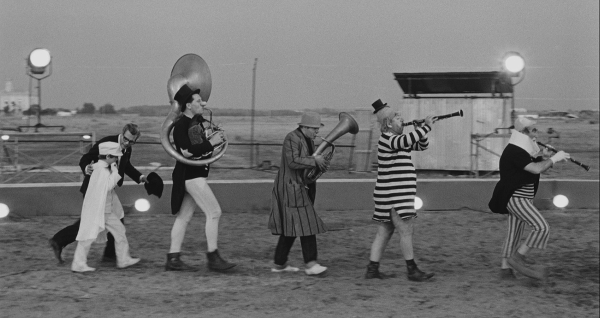
The results are always exhilarating, precisely because they are not the “logical” starting points one would choose for an intellectual discussion of the film. Rather, they are all fragments that illuminate the deeper resonances of the film –– wispy threads that, if we follow them, lead us into the heart of the maze. Terry Gilliam, a director whose own films often play at the borders of dreamland, refers to these remembered fragments as “cinematic shrapnel … moments of sheer clarity, brilliance, or magic” that lodge in the viewer’s brain.
In a recent class discussion of Billy Wilder’s Sunset Blvd., the images that my students recalled a week after viewing were not the “classic” moments or quotes –– Norma descending down the stairs to announce that she’s ready for her close-up, or Joe Gillis floating in the swimming pool –– but odder moments that seem inconsequential on the surface: Norma’s “crazy-eyed” response to catching her own reflection in a mirror … the cigarette trapped in the wire holder perched on her finger … the hand of a dead chimpanzee poking out from under a shroud. A class discussion that begins by contemplating these bits of shrapnel allows the students to dive into the essence of a film via their somatic experience of it: what they remembered, how it made them feel, where they see its echoes –– as if it were a dream that they themselves have had.
The really exciting discussions happen when a student shares a remembered image with the group only to have another student, or even more than one, suddenly exclaim, “That’s what I was going to say!” My students are usually frustrated when they feel that they’ve been “scooped” until I offer a different perspective: that out of all the moments and images in a film that they watched a week ago, tempered by seven busy days full of all sorts of external stimuli, more than one of them remembered the exact same tiny detail. These are the potent images! –– as if two people had the exact same dream. And as such, these are the images that speak to cinema as an art form of collective dreams.
For those of us who are filmmakers, these are the images we aspire to create: images that stick in moviegoers’ brains, that haunt them, that feel to them like fragments of their own dreams, that speak in profound and mysterious ways to a common humanity in all of us.
The sequence that I missed during my recent drowsy encounter with Stalker, the bit of the film I had been looking forward to so much, is a series of languid tracking shots of a vanished civilization’s detritus submerged in a flooded room –– basically images of forgotten garbage, but one of the dreamiest, most beautiful stretches of cinema I’ve ever seen. Other Stalker fans I know also cite this sequence as one of their favorites. I didn’t actually see it that particular night, but it’s alive in my head nonetheless –– cinematic shrapnel, if ever there was such a thing. Instead of seeing it, I was pleasantly drifting in dreamland … in a crowded theater … among a community of strangers, some of whom were asleep as well, others who were awake and taking the images in. But at the end of the evening, as we all filed out of the movie theater, every one of us emerged together from the very same dream.


